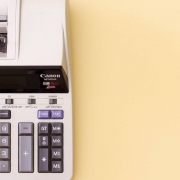What is e-commerce?
There are four main types of e-commerce: Business to Consumer (B2C) Business to Business (B2B) Consumer to Consumer (C2C) Consumer to Business (C2B)
E-commerce includes retail, wholesale, services, drop shipping, crowdfunding, subscription, physical products and digital products.
How lockdown changed online buying and selling
When lockdown began in March, businesses quickly understood the importance of having a digital presence. With non-essential businesses having to close their physical stores, maintaining sales in economic turmoil has meant relying on digital platforms.
Customer experience has proved to be extremely important and there are numerous factors which can affect this, such as returns or customer service, dictated by e-commerce. Forbes reported that “more energy and intensity is being put into improving customer experiences online”.
How businesses adopt e-commerce
A digital platform could be created through coding the website yourself or using a template from a platform such as WordPress or Shopify. PYMNTS’ 2020 Remote Payments Study found mobile devices are the most popular device for online shopping by a long way. Therefore, a platform or an app should also be created for an ease of mobile use.
Cybersecurity and E-commerce
With the increase in people buying and selling online also unfortunately means an increase in cybersecurity concerns.
EMISA released guidance for both citizens and SMEs in relation to e-commerce. Some of the important points for citizens include looking for a secure connection, being aware of phishing emails and payment fraud. For sellers, this includes securing the website, storing all passwords securely and ensuring compliance with data protection legislation.
The Future of E-commerce
With social distancing in place for an unknown amount of time, online purchasing is likely to be a primary form of buying or selling a product. Generally, the digital presence of businesses has increased, and communications online have altered.
“Millions of online customers changing their behaviour at the same time to opt for more time saving and convenience puts a considerable strain on e-commerce and online retailers today”.
“Once state by state stay at home orders are lifted, e-commerce sales may stabilise at a lower growth rate than they are today. Yet, the behavioural changes are already in motion to completely change the retailing landscape and commerce overall for years to come.”
Digital campaigns could become more creative to accommodate this change in consumer buying behaviour.










Leave a Reply
Want to join the discussion?Feel free to contribute!